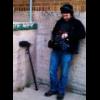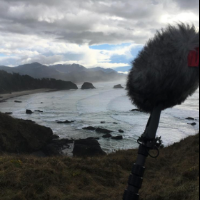-
Posts
2,813 -
Joined
-
Last visited
-
Days Won
38
About Derek H
- Birthday January 1
Profile Information
-
Location
Chicago
-
About
http://www.imdb.com/name/nm2660130/
-
Interested in Sound for Picture
Yes
Recent Profile Visitors
11,001 profile views
-
Regarding cable length. Comtek recommends headphones with a 36” cable for better radio reception since the headphone cable is used as an antenna. Maybe that was specific to the 72-76 units though. Doc is there a particular reason you chose the length you did for the scene monitors? Just curious.
-
Hey Doc are there different revisions of the scene monitor? Or is it the same since you first released them?
-
Yeah I figured that was probably the case. Or maybe Hamiltonbuhl designed them and had them made to their spec and other production lines copied it. We just don’t really know.
-
Derek H started following BDS dual NP cup hot swap issue , Directors and Video Village Headphones , Sennehiser Evo G4 receiver cable... and 3 others
-
Pretty sure those LSC models are just HamiltonBuhl relabeled HA2s. Which you can get a little cheaper directly from them. https://hamiltonbuhl.com/store/products/912/HamiltonBuhl-Personal-On-Ear-Stereo-Headphone they’re nice enough with a thick quality one-sided cord and they fold flat. Cord is a little long, 5 feet.
-
Thank you!
-
Thanks Matt!
-
I don’t think anything has changed with these since G1… Could be wrong. I have a mix of G2/3/4 and the cables are all interchangeable. I just checked for you and the stock 3.5mm to XLRM cable that came with my old G3 is wired with the ring floating and pins 1&3 to sleeve and pin 2 to tip. The stock 3.5mm locking to non-locking 3.5mm has the Ring on the locking end floating and the tip connected to tip and ring on the non-locking end. Sleeves connected. My custom cables are all wired the same as well and have always worked for feeding cameras and mixers. You might be thinking of the transmitter input which is different and does require you to ground the unused ring or tip to sleeve in order to select your input level mic or line. Think of the receiver output as being mono unbalanced. If you plug in headphones to it you’ll only hear one side.
-
Canare is the best
-
Because supposedly it holds up better to repeated bending and handling whereas a spiral wrap shield can spread apart more when it’s bent.
-
I’m guessing it would not work with 1.5” rail and maybe not with 30mm either?
-
Is this for a jumper from mixer to boom pole? If so, I always prefer stretchy coiled jumpers for that though they are a pain in the ass and you definitely want to buy two because they seem to go bad sooner or later. Not sure how beneficial Starquad is for a short jumper like that but couldn’t hurt. I would go with the mini-starquad or the other Canare you mentioned. My main criteria would be a french braided shield.
-
Yeah I was going to mention TX advance as well but figured its a non starter if you really wanted apple. Great thing about TX advance is with a $40 SDR dongle and a USB adapter cable you can scan your entire operating range right in the app and’s let it do a full coordination for you choosing clean frequencies. It gives you similar functionality to wireless designer/ wireless workbench but is brand neutral. It does have a bit of a learning curve but can do a lot and the developer wrote a good user manual for it.
-
Only ones I know of are FreqFinder and Lectro Controller. Not sure they have the features you’re looking for.
-
Hey Wyatt, just curious on a couple things. What size extrusion are you using? Also do you use anything to keep the gear recessed?
-
I agree that it sounds like some battery protection circuit kicked in. Either in the BDS (poly fuse) or something maybe more sophisticated in the battery itself. Maybe the level of charge had nothing to do with it and there was a small arc or something that kicked a fuse. I’ve had this happen when hot-plugging a device with a barrel connector (bad idea) and there’s a tiny arc and the whole bag shuts down. Give it a ten second rest and it powers back up. Poly fuse. Still thinking about this… maybe what happened when you hot swapped was the NP fresh off the charger at 16V and put it in parallel with the 13.5V NP too much current rushed from the charged NP to the low NP (batteries in parallel will balance each other’s voltage this way) and it tripped the low battery’s charge current protection. The basic remote audio BDS doesn’t have anything fancy built in for managing two batteries as far as I know. A better way to run two batteries together might be to have a circuit that doesn’t allow the two batteries to interact. Like a Schotkey diode. The PSC triple bds for example has some circuit on it that does this. It has two separate input connectors too. This also lets you have an AC adapter in one input and battery backup in the other. Sorry not trying to sales pitch PSC stuff but just an example of other options to handle this scenario.





.jpg.60deb0716219777743dadbbc5c367e0c.thumb.jpg.1c9a3a88e16c9817f9ba0b039743d08a.jpg)



